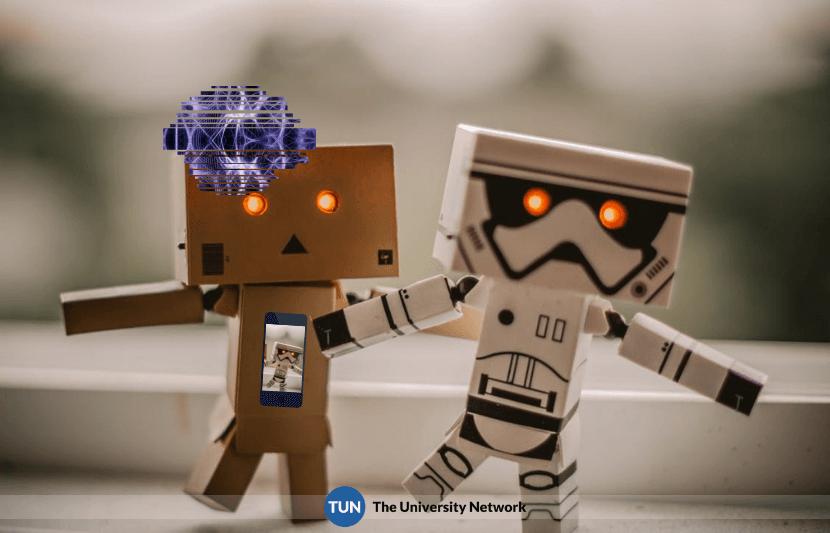Robots are coming.
But this time they aren’t the giant, metal gearheads in “The Terminator,” or the slick, futuristic machines that Will Smith fought off in “I, Robot.” And, as of now, the goal of the machines isn’t to enslave the human race.
Instead, they are gunning for jobs.
Robots have already transformed manufacturing and other manual labor industries, and they aren’t stopping there.
Artificial Intelligence (AI) machines have begun taking on tasks that require cognitive thinking. They threaten journalists, doctors, accountants, stock traders, drivers and many others.
But, as in the Industrial Revolution and other major transformations in history, some jobs will disappear and others will emerge.
Humans, however, must learn how to adjust and develop the skills necessary for the new, rapidly changing employment field, and it is the responsibility of the educational institutions to put people in a good position to do so.
Where automation is taking over
With the rise of robotics and AI, nearly no existing job is safe.
A McKinsey report found that, by 2030, half of current work activities could theoretically be automated. In just 12 years, 400-800 million people could be replaced by automation.
Cars can drive themselves, machines are flipping burgers, customer service representatives are being replaced by software, surgeons are struggling to compete with their robotic colleagues, and robots are reporting the news.
The Associated Press, The Washington Post and others are punching information into a computer system and receiving a news story in minutes.
In its first year of “employment,” The Washington Post’s robot reporter published 850 articles on diverse topics, including the Rio Olympics, high school sports and even the 2016 presidential election.
While reporters have room to worry, the fields most at risk are predictable. The jobs that require physical, repetitive labor will be simple and cheap to replace. Fast food workers, machinery operators and drivers may need to think about adapting their skill set.
But for those worrying about their specific job security, the website “Will Robots Take My Job” will answer if the job is at risk.
The positive outlook
First, it is noteworthy to consider that bringing in new technology or automation to an industry doesn’t automatically equal job loss.
Moving toward automation will undoubtedly eliminate many of the specific tasks that exist today, but new jobs and opportunities will emerge.
In 1900, 40 percent of American workers had jobs in agriculture, and partially due to advancements in machinery, that number has dropped to 2 percent. But jobs appeared elsewhere, and the advanced agriculture machines present today make it possible to produce enough food without subjecting a large amount of laborers to the harsh conditions and little pay they would receive if required to farm enough food for today’s growing population.
AI machines will force people out of manufacturing and physical labor jobs, primarily, but new opportunities are opening in science, technology, engineering and mathematics (STEM) fields.
While nearly every occupation has potential to be impacted by automation, less than 5 percent can be fully automated without the role of humans. So, instead of a future where humans sit on their hands and watch robots work, people will be working side-by-side with machines.
How education can help
If humans want to become capable of living and working next to robots, universities have a responsibility to adapt their teaching methods.
People will no longer need to focus on learning specific technical skills. Instead, they will have to refine their ability to think and learn continuously over time.
“Information transfer is no longer the sole function of HE (higher education),” Nancy W. Gleason, director of the Centre for Teaching and Learning and Senior Lecturer within the Social Science Division at Yale-NUS College, said in a statement.
“Institutions have to create critical thinkers who can problem-solve in a constantly-changing work environment.”
Universities must move towards teaching a broader, more general education.
“Content is important, but more important is what institutions do with it,” Gleason said in a statement. “Cultivating minds capable of constantly learning is essential for the nurturing of long-term employability, something many HE institutions under-deliver despite high tuition fees.”
Education systems, starting with elementary schools, must also encourage young students to enter STEM fields.
Although many STEM fields require extra years of expensive education, advancements in AI and robotics are expected to bring tuition costs down.
“Artificial intelligence will replace administrative staff,” Gleason said in a statement. “The newly-available revenue will provide investment opportunities like lower tuition, increased financial aid, upgraded facilities, or the development of a new, innovative curriculum for the future economy.”
Conclusion
Commander Spock said it best: “Computers make excellent and efficient servants, but I have no wish to serve under them.”
Well, Spock, we won’t have to.
With an adjustment to the education system and a future workforce interested and excited about entering STEM fields, our employment opportunities will expand and our workforce will adapt like it always has.



